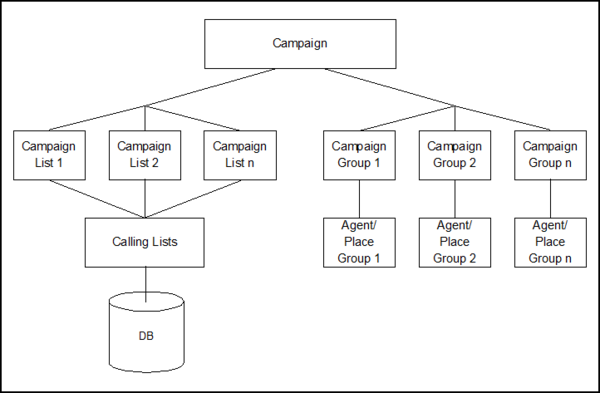Campaign Objects
Campaign statistics are calculated exclusively for the Outbound Contact Solution to reflect campaign performance. Consult the Outbound Contact Solution documentation for information about campaigns. Stat Server provides statistics on groups of agents or groups of places participating in one or more campaigns concurrently, and on one or more calling lists used to run a campaign.
Stat Server bases statistics for a campaign on the following campaign objects:
- Campaign
- CampaignGroup
- CallingList
- CampaignCallingList
Stat Server’s Campaign and CallingList objects correspond to Configuration Server’s Campaign and CallingList objects. Accordingly, these objects must have the same names as Configuration Layer’s campaign objects. Campaign Group and CampaignCallingList objects are configured within and are meaningful only to Stat Server. A CampaignGroup object is based on a GroupAgents object that has been assigned to a specific campaign. A Campaign CallingList object is based on a CallingList object that has been assigned to a specific campaign.
CampaignGroup and CampaignCallingList objects must be named campaign@groupname and campaign@callinglist, respectively, where groupname (callinglist) is the name of a specific group of agents (CallingList) that has been assigned to the campaign. These Stat Server objects are visible within CCPulse+.
Starting with release 7.5, Configuration Server allows an arbitrary name for a CampaignGroup, however, Stat Server only recognizes a CampaignGroup, named as <campaign name>@<group name>, where <campaign name> is the name of the campaign and <group name> is the name of the group (agent group or place group).
The graphic below shows the hierarchy of the Stat Server campaign objects (see the Stat Server Telephony Objects schema, for lower levels of the hierarchy).
Hierarchy of Stat Server Campaign Objects
Campaign objects and campaign actions are further described in this chapter.

